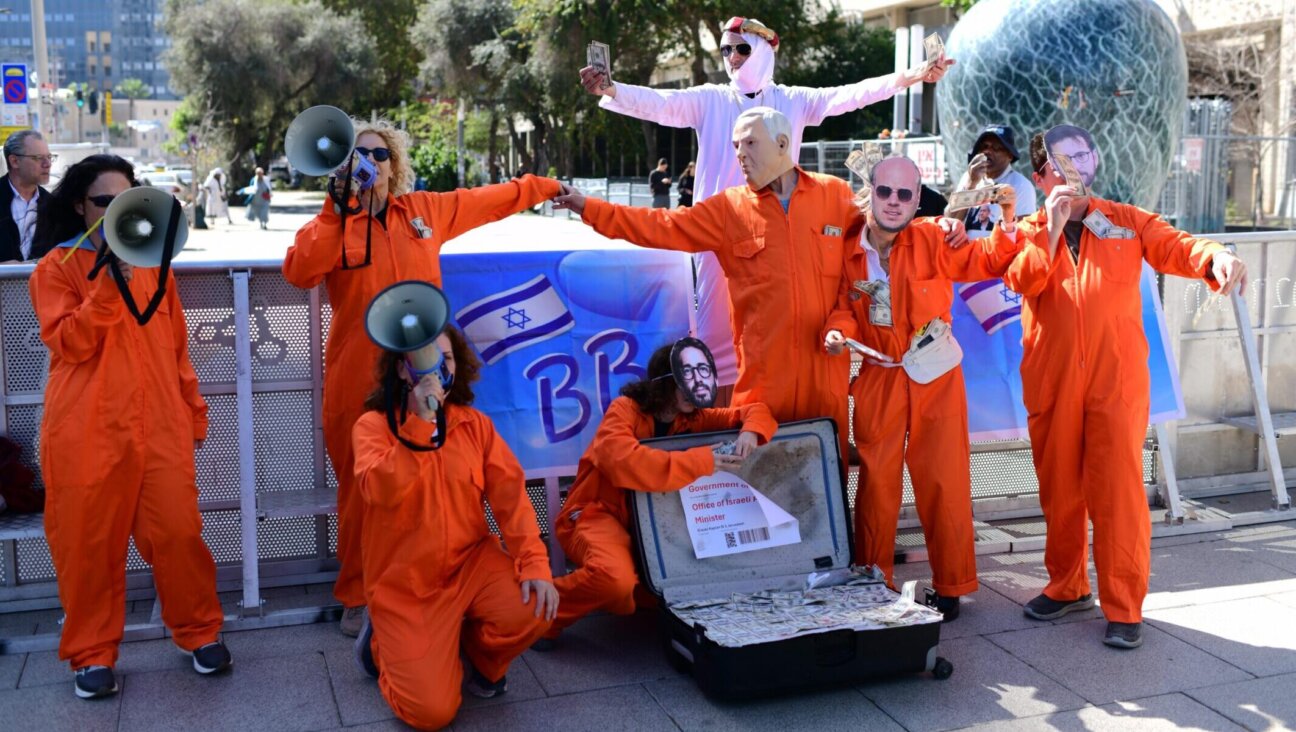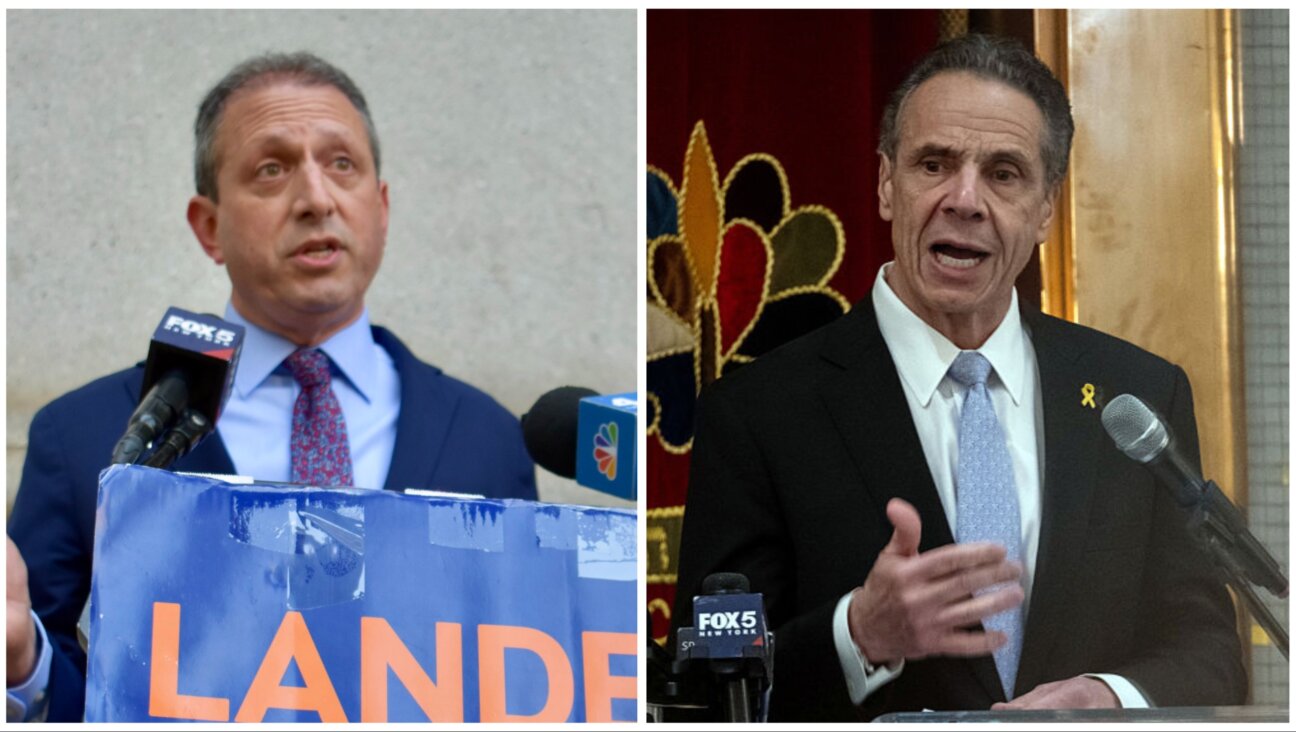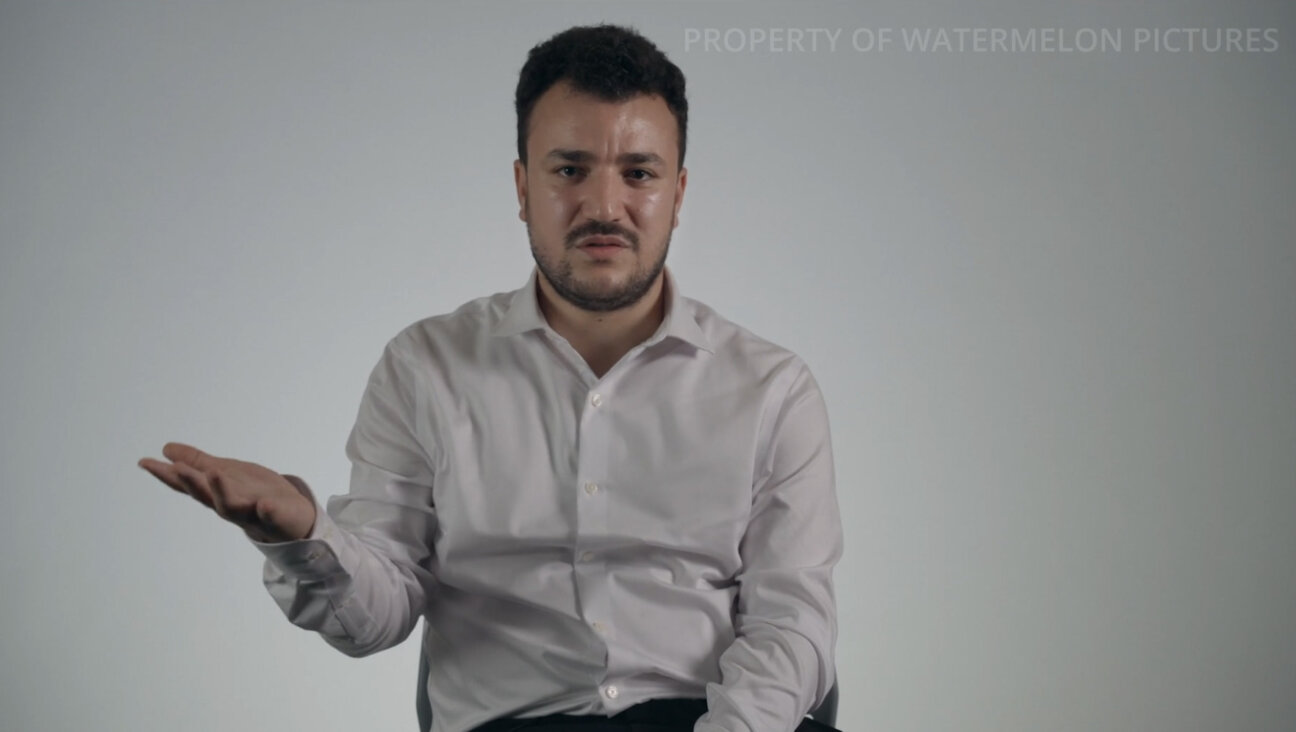Bay Area Artists Fight Over Framing of Mideast Conflict

Alan Kaufman says a gallery canceled his contract because his art has Zionist themes
Oakland, Calif. – Over the past few months, the City by the Bay has become the city in the fray. Driven by three separate incidents, a communitywide debate has emerged over the Middle East conflict — and, specifically, how it is expressed artistically, in both public and private spaces.

Alan Kaufman says a gallery canceled his contract because his art has Zionist themes
Last August, San Francisco State University approved a mural celebrating the late Palestinian scholar and activist Edward Said, but only after organizers agreed to remove elements identified by Jewish groups as advocating Israel’s destruction. A month later, the city’s arts commission signed off on changes to another public mural that had drawn similar complaints. And now, a Jewish artist is accusing a gallery owner of dropping his contract because of his proposed art catalog’s Zionist theme.
“The Bay Area is a hyper-political environment where community discussions can be very polarizing,” said Abby Michelson Porth, associate director of the San Francisco Jewish Community Relations Council. “Anti-Israel activity and rhetoric is taking place in forums where it was previously denied a presence.”
Artist Alan Kaufman, in the dispute with the gallery owner, spoke more bluntly.
“In the art world in general and in the world of culture, it’s increasingly the case — not only in the Bay Area but everywhere — that Zionism is a pariah kind of philosophy, a shunned, despised kind of philosophy, and any kind of association with it brings immediate, negative repercussions,” he said in an interview with the Forward. “I think this is a case of that.”
In 2006, San Francisco State President Robert Corrigan nixed plans for the Said mural on the campus student center proposed by the campus’s General Union of Palestine Students. He approved a redesign in August of this year that removed the image of the Palestinian cartoon character Handala gripping a key — which Jewish groups said symbolized the Palestinian right of return and destruction of the Jewish state — and what some saw as a sword and others saw as a pen. The new mural is set to be unveiled November 2, and the Palestinian student group plans a daylong series of events in celebration.
Porth said that the Said mural flap wasn’t about “artistic expression or free speech” but rather “how permanent art on public land communicates a message to the population that surrounds that art. The university has long recognized that a university is a place for a free exchange of ideas and deliberation, but that cannot be at the expense of a people or their right to exist in this world.”
Porth and others raised similar objections to a mural in the city’s Mission District, designed by a local artist and painted last summer by more than 200 community members on city property using a neighborhood beautification grant. One section depicted Palestinians — one with a keffiyeh over her face — breaking through an Israel-shaped crack in an Israeli security barrier.
Porth said that the design looked hostile to the city’s Jewish residents. She set out to work with the muralists on tweaking it. Homies Organizing the Mission to Empower Youth, the mural’s sponsor, and artist Eric Norberg agreed to make changes — including altering the crack’s shape so that it didn’t resemble Israel’s silhouette, adding an olive tree to symbolize peace and removing the keffiyeh. A city arts commission panel approved the changes last month.
Porth said she had not heard about Kaufman’s situation until the Forward described it; she called it “very disheartening” but said there’s a big difference between publicly funded and displayed art — like the murals — and decisions made by private gallery owners.
Kaufman said that gallery owner David Himmelberger abruptly dropped plans to publish a catalog of his work after seeing Kaufman’s draft, titled “Visionary Expressionism: A Zionist Art.” Kaufman had solicited brief essays from friends such as David Twersky, a contributing editor for The New York Sun and senior adviser to the American Jewish Congress’s executive director; David Rosenberg, co-author of “The Book of J” and author of “Abraham: The First Historical Biography,” and Israeli author Etgar Keret. Kaufman, author of the memoir “Jew Boy” and the novel “Matches,” also penned an essay for the catalog.
“His reaction to that was immediate and profound. He pointed to the title of the catalog and said, ‘There’s no way I’ll do that, never,’” Kaufman said. He claimed that Himmelberger told him such a presentation was antithetical to the aims of the gallery, which include fostering international understanding by rejecting nationalism.
Kaufman said he considers Zionism “the civil rights movement of the Jewish people” and is offended when people express empathy or support for Jews and even Israel, yet shun the term “Zionism.”
Riva Gambert, director of the Israel Center at the Jewish Federation of the Greater East Bay, said she met with both Kaufman and Himmelberger this past summer and can’t imagine how the catalog could have come as a surprise to the gallery owner.
“It was obvious the purpose of the paintings and the exhibition and any potential programming attached to it would be to bring to people’s attention the threats facing Israel,” Gambert said. “If Zionism is demonized, then the whole basis, the raison d’etre of having a Jewish state, is undermined.”
Himmelberger replied to the Forward’s inquiries only with an e-mail that said: “Himmelberger Gallery’s written and signed agreement with Alan Kaufman expired on September 13, 2007. Himmelberger Gallery no longer represents Mr. Alan Kaufman.”
But Kaufman contends that he and Himmelberger had discussed plans for well into 2008, and Himmelberger pulled the paintings from his Web site only after Kaufman went public with his complaints about the catalog being nixed. Kaufman said he believes Himmelberger’s sudden aversion to the art’s Zionist themes resulted at least in part from the Israel Center’s refusal to shell out the six-figure sum Himmelberger had sought for an installation of the work.
The gallery situation notwithstanding, Porth said the open, frank dialogue created as a result of the murals might leave a more lasting mark on the community than the murals themselves.
“These issues arise in the Bay Area on a daily basis,” said Porth, who added that the way in which the Jewish community responds is perhaps more important than the end result. After all, she said, “these are our neighbors.”
The Forward is free to read, but it isn’t free to produce

I hope you appreciated this article. Before you go, I’d like to ask you to please support the Forward.
At a time when other newsrooms are closing or cutting back, the Forward has removed its paywall and invested additional resources to report on the ground from Israel and around the U.S. on the impact of the war, rising antisemitism and polarized discourse.
Readers like you make it all possible. We’ve started our Passover Fundraising Drive, and we need 1,800 readers like you to step up to support the Forward by April 21. Members of the Forward board are even matching the first 1,000 gifts, up to $70,000.
This is a great time to support independent Jewish journalism, because every dollar goes twice as far.
— Rachel Fishman Feddersen, Publisher and CEO
2X match on all Passover gifts!
Most Popular
- 1

Fast Forward Cory Booker proclaims, ‘Hineni’ — I am here — 19 hours into anti-Trump Senate speech
- 2
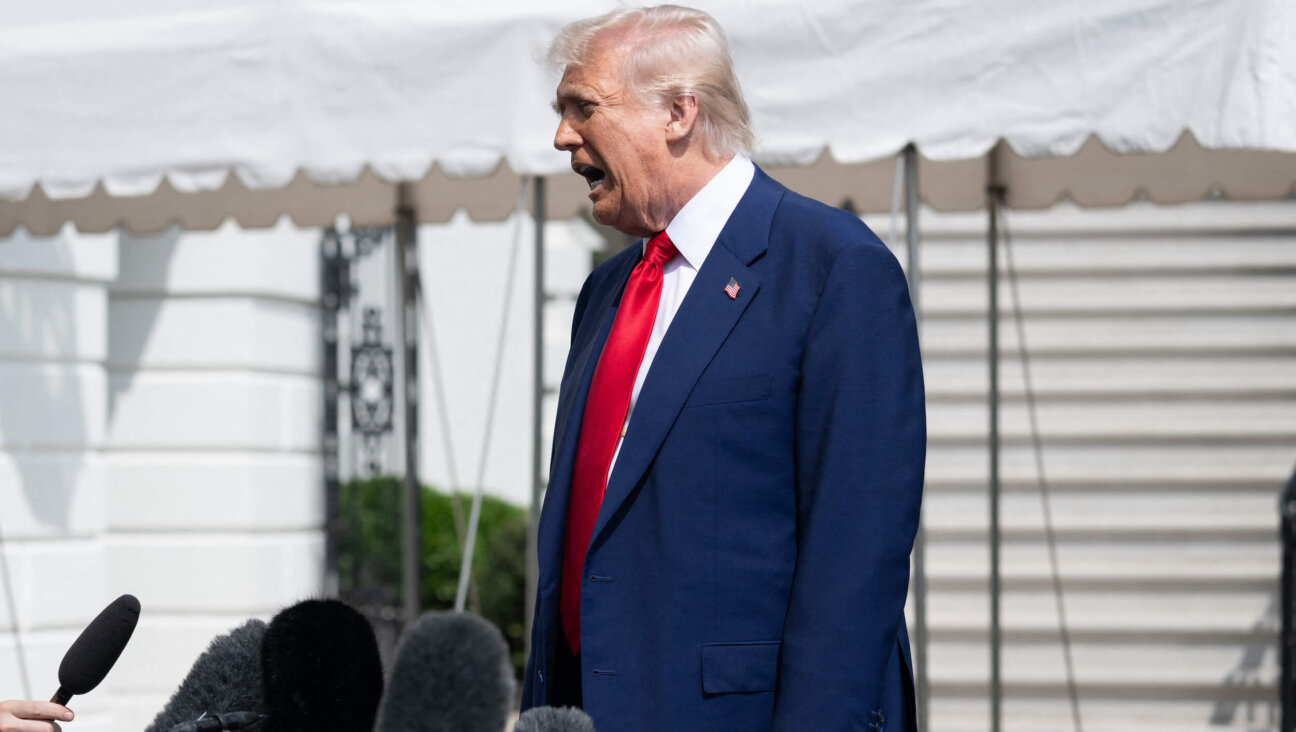
Opinion Trump’s Israel tariffs are a BDS dream come true — can Netanyahu make him rethink them?
- 3
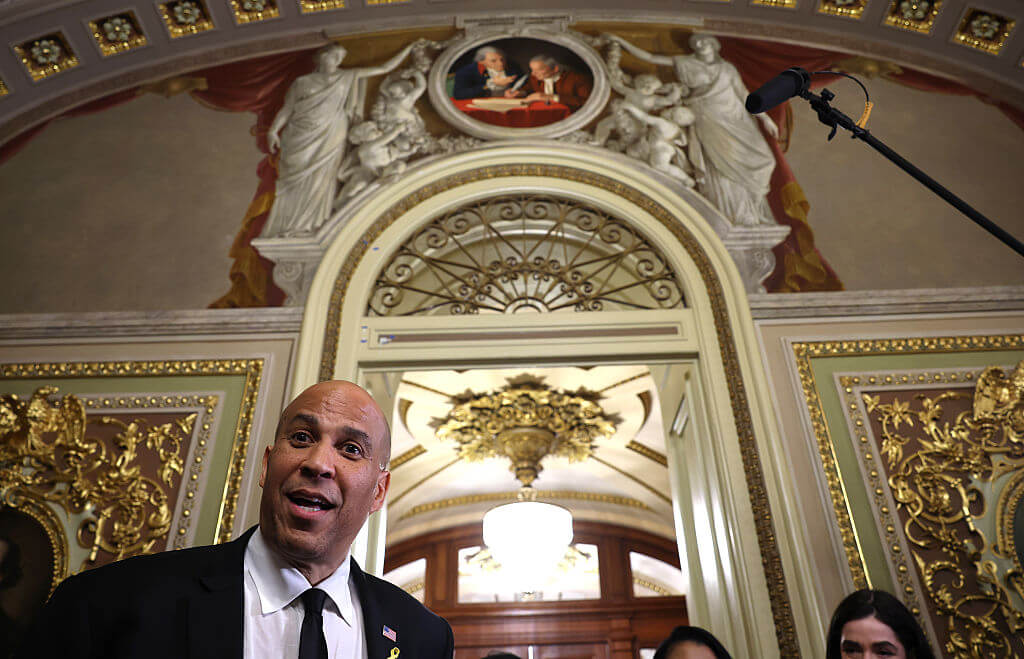
Fast Forward Cory Booker’s rabbi has notes on Booker’s 25-hour speech
- 4
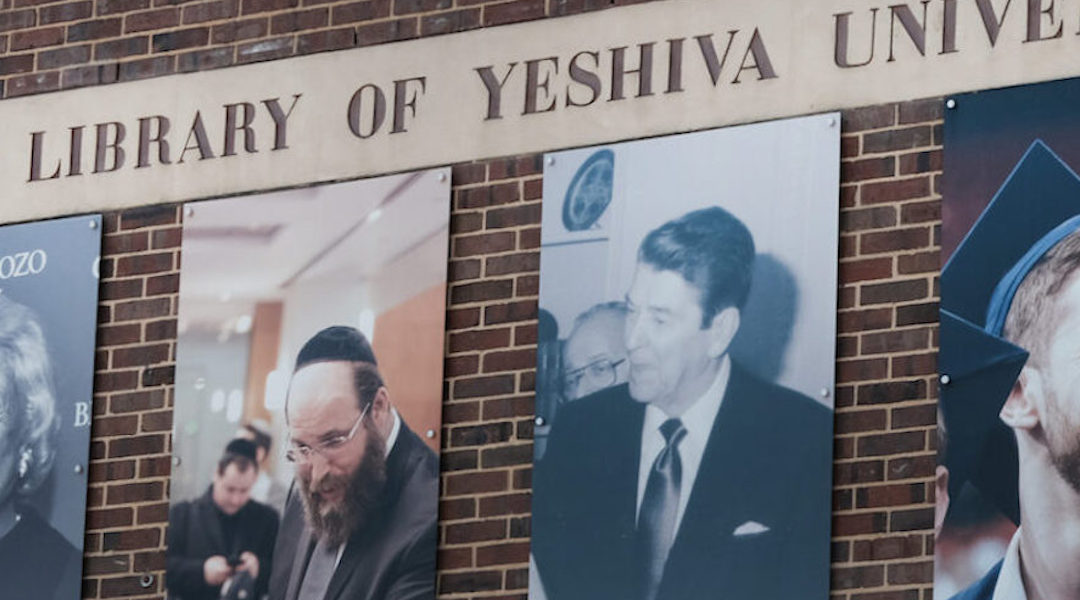
News Rabbis revolt over LGBTQ+ club, exposing fight over queer acceptance at Yeshiva University
In Case You Missed It
-

Fast Forward Trump says US has begun direct talks with Iran over its nuclear program
-

Fast Forward In new letter, Mahmoud Khalil downplays campus antisemitism and accuses some students of ‘participating in the genocide’
-
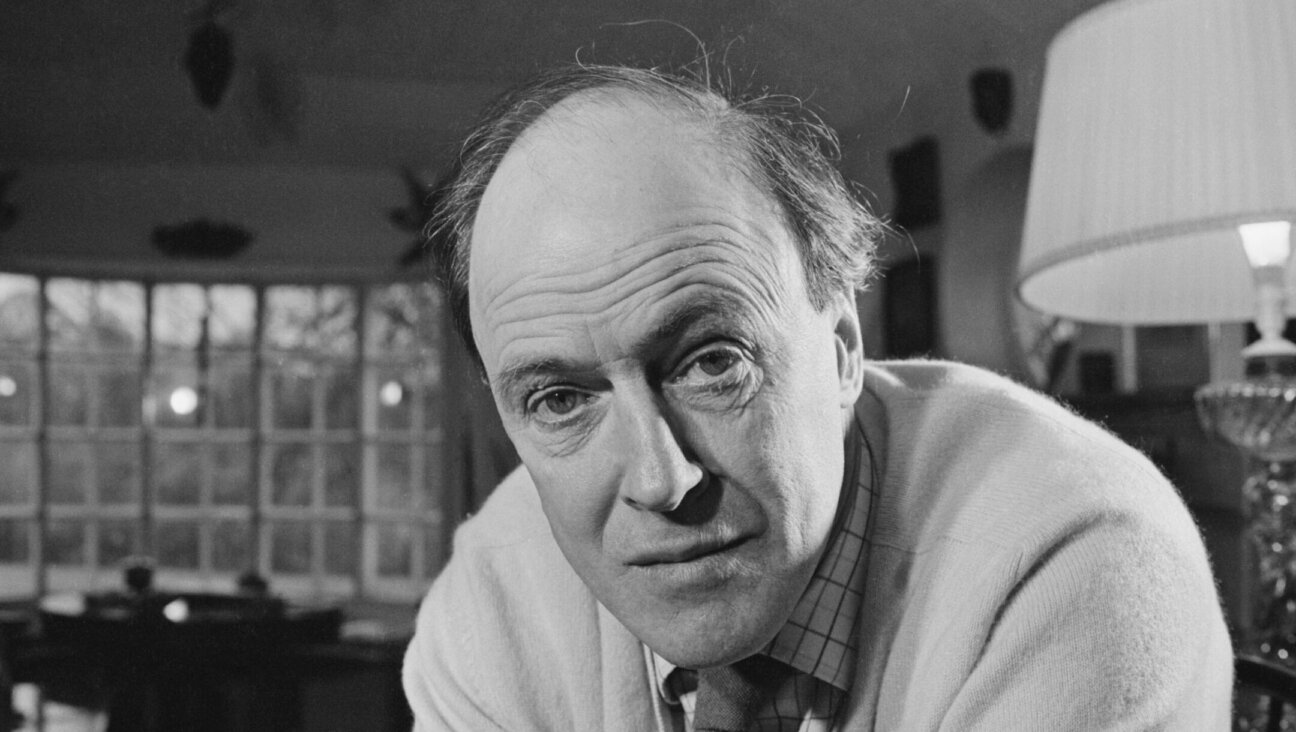
Fast Forward Play about Roald Dahl’s antisemitism wins 3 Olivier Awards
-

Opinion A legacy of defiance: Why I’m holding my Seder in one of the oldest Black churches in the country
-
Shop the Forward Store
100% of profits support our journalism
Republish This Story
Please read before republishing
We’re happy to make this story available to republish for free, unless it originated with JTA, Haaretz or another publication (as indicated on the article) and as long as you follow our guidelines.
You must comply with the following:
- Credit the Forward
- Retain our pixel
- Preserve our canonical link in Google search
- Add a noindex tag in Google search
See our full guidelines for more information, and this guide for detail about canonical URLs.
To republish, copy the HTML by clicking on the yellow button to the right; it includes our tracking pixel, all paragraph styles and hyperlinks, the author byline and credit to the Forward. It does not include images; to avoid copyright violations, you must add them manually, following our guidelines. Please email us at [email protected], subject line “republish,” with any questions or to let us know what stories you’re picking up.







